Asia Pacific Academy of Science Pte. Ltd. (APACSCI) specializes in international journal publishing. APACSCI adopts the open access publishing model and provides an important communication bridge for academic groups whose interest fields include engineering, technology, medicine, computer, mathematics, agriculture and forestry, and environment.
Journal of Biological Regulators and Homeostatic Agents | View Journal | Current Issue | Register |
|
Journal of Biological Regulators and Homeostatic Agents (JBRHA, Print ISSN: 0393-974X, Electronic ISSN: 1724-6083) is a peer-reviewed journal published 4 issues per year since 2025. The journal is committed to publishing the full range of topics in the fields of experimental and clinical medicine, molecular biology, biochemistry, regulatory molecules, cellular immunology and pharmacology and the single most important criterion for acceptance is scientific excellence. The content of the article includes putting forward and verifying some hypotheses, new ideas or new problems to be solved, as well as novel findings from experiment, which will provide new perspectives and methods for understanding these topics, and stimulate the interest of the journal readers. |
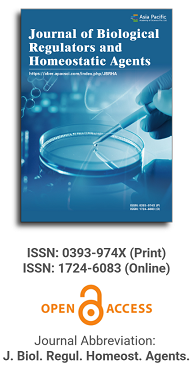 |
Metaverse | View Journal | Current Issue | Register |
|
The metaverse is a digital universe and a parallel world, which involves the application and development of Metaverse in interdisciplinary lenses, bridging fields such as social sciences, psychology, economics, communication, cultural studies, ethics, and the arts. Topics may include human behavior in virtual environments, economic systems in digital worlds, narrative and identity construction, immersive pedagogy, sociotechnical imaginaries, and the cultural impact of metaverse technologies. The metaverse is underpinned by six core technological domains: blockchain technology, interactivity technology (VR/AR/MR/XR/ER), game technology (game engine, game code, multimedia resources), AI technology, network communication technology, and Internet of Things. To support the operation of the huge metaverse, it also needs extremely powerful algorithms. Metaverse (eISSN: 2810-9791) is an open-access academic journal that dedicated to exploring a wide spectrum of metaverse-related topics, academic supported by Institute for Metaverse, School of Artificial Intelligence, Nanjing University of Information Science & Technology (NUIST). Metaverse also welcomes different types of articles including research article, case report, review, perspective, and commentary concerned with metaverse studies such as the concept definition and its development. Authors should read the focus and scope before submission. |
 |
Sustainable Social Development | View Journal | Current Issue | Register |
|
Sustainable Social Development (SSD, eISSN: 2972-4880) is an interdisciplinary journal dedicated to advancing research and knowledge related to sustainable development, from theories to practices, and from challenges to solutions. The journal aims to provide a platform for scholars, researchers, and practitioners to share their insights, theories, and empirical findings. SSD welcomes original research articles, reviews, case reports, perspectives, and communications that advance knowledge and understanding in the field. Other insightful articles are also welcomed. The journal encourages interdisciplinary research and cross-sectoral collaborations, bridging academia, policy, and practice to foster sustainable social development. |
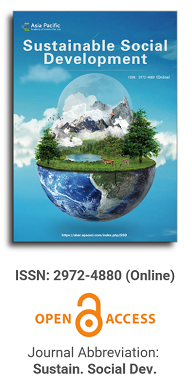 |
Journal of Environmental Law and Policy | View Journal | Current Issue | Register |
|
Journal of Environmental Law and Policy (eISSN 2564-016X) is an international, scientific double blind peer-reviewed open access journal. Open Access: free for readers, with article processing charges (APC) paid by authors or their institutions. Fast Publication: Provisional acceptance to the submitted article is given in 1 week time. After consent of author(s), manuscript is peer-reviewed, and a first decision provided to authors in 2-4 weeks after submission. |
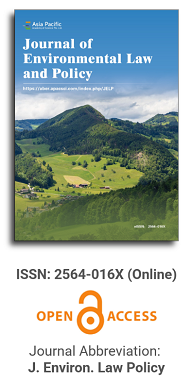 |
Mathematics and Systems Science | View Journal | Current Issue | Register |
Mathematics and Systems Science (MSS, eISSN: 3029-2522) focuses on the publication of significant research findings in the field of mathematics and its applications to systems science. The journal welcomes submissions related to mathematics, such as applied mathematics, computational mathematics, system theory, system control, system engineering, system biology, operations research and management, probability theory, statistics, and information processing. |  |
Computer and Telecommunication Engineering | View Journal | Current Issue | Register |
Computer and Telecommunication Engineering (CTE, eISSN: 3029-2298) is an international open access journal involving the study of computer and telecommunication systems. The journal welcomes submissions from worldwide researchers and practitioners in the field of computer and telecommunication, which can be original research articles, review articles, case reports, commentaries, etc. All submissions will undergo a rigorous double blind peer review process. | 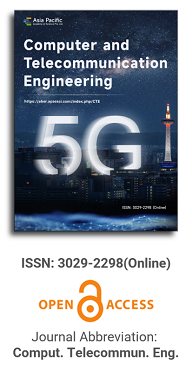 |
Smart Tourism | View Journal | Current Issue | Register |
Smart Tourism (ST, eISSN: 2810-9821) is an open-access peer-reviewed journal. ST publishes articles that promote tourism management, tourism service, tourism marketing, etc. Smart methods talked about in this journal cover modern intelligent technologies, innovative ideas and practices, and pioneering policies. All of these methods and technologies should be conducive to promoting tourism development, boosting the tourism economy, enhancing the tourist experience, and ensuring tourism sustainability. This journal aims to inspire new ideas on policy formulation, the prosperity of villages, cultural protection, etc. The journal welcomes all relevant submissions of research articles, brief reports, perspectives, reviews, etc., which make constructive contributions to theory, technology, and methods. Articles related to new technologies for tourism are extremely welcomed. | 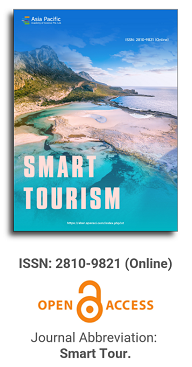 |
Wearable Technology | View Journal | Current Issue | Register |
|
Wearable Technology (WT, eISSN: 2810-9783) is a comprehensive, high-quality international open-access journal that brings together multi-industry features of technology, devices and products in industries and fields such as medicine, sports, apparel, health monitoring and management, and artificial intelligence. It is dedicated to studying the implementation of technology and analyzing the use of products. The journal provides a good communication platform for scholars and experts from various industries, and we welcome the submissions of original research articles, review articles, case reports, commentaries, etc. |
 |
Eco Cities | View Journal | Current Issue | Register |
Eco Cities (EC, eISSN: 2810-9813) is an Open Access journal that provides a forum for studies in the field of urban ecology and sustainability. Submitted manuscripts will go through a rigorous double-blind peer-reviewed process. Eco-city is a social, economic, cultural, and natural composite ecosystem with a high level of synergy and harmony, which has the function of material recycling, social harmony, and synergy between humans and nature. EC aims to respond and adapt to the newest developments in scholarly publishing and, at the same time, addresses highly relevant scientific and societal topics. This journal makes research outputs publicly available and allows for different types of articles, including original research articles, review articles, book reviews, editorials, communications, perspectives, brief reports, etc. | 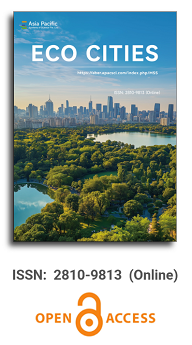 |
Advances in Modern Agriculture | View Journal | Current Issue | Register |
Advances in Modern Agriculture (AMA, eISSN: 2811-0145) is an international academic journal, which is open access and focuses on theoretical research advances and practical exploration results in modern agriculture. A rigorous double blind peer-reviewed process will be taken on all submitted manuscripts. AMA aims to respond and adapt to the newest developments in scholarly publishing and at the same time, addresses highly relevant scientific and societal topics. This journal makes research outputs publicly available and allows for different types of articles including research articles, review articles, book reviews, editorials, perspectives, etc. | 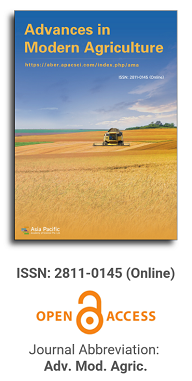 |
Cardiac and Cardiovascular Research | View Journal | Current Issue | Register |
Cardiac and Cardiovascular Research (CCR, eISSN: 2811-0099) is a peer-reviewed, open-access journal published online by Asia Pacific Academy of Science Pte. Ltd. CCR offers an advanced platform dedicated to the research and treatment of diseases related to the heart and blood vessels. This platform integrates the latest medical technologies and research findings. It aims to improve our understanding of the diseases, clinical trials, clinical outcomes, and advances in therapies through timely, insightful scientific communication. This journal makes research outputs publicly available and welcomes different types of articles including original research articles, reviews, perspectives, case reports, etc. | 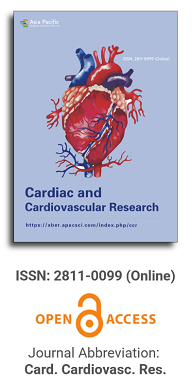 |
Urinary and Renal Research | View Journal | Current Issue | Register |
Urinary and Renal Research (URR, eISSN: 2811-0161) is an open access journal, which provides a forum for studies in the field of urinary and renal. The submitted manuscript will go through a rigorous double blind peer-reviewed process. URR aims to respond and adapt to the newest developments in scholarly publishing and at the same time, addresses highly relevant scientific and societal topics. This journal makes research outputs publicly available and allows for different types of articles including original research articles, review articles, book reviews, editorials, commentaries, case report, etc. The journal will specifically address the following topics but not limited to: Prostate enlargement, kidney stones, urinary incontinence, and urinary tract infections. | 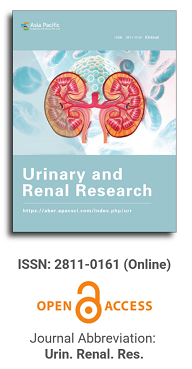 |
Advances in Analytic Science | View Journal | Current Issue | Register |
|
Advances in Analytic Science (AAS, eISSN: 2811-0129) is a peer-reviewed, open-access journal published online by Asia Pacific Academy of Science Pte. Ltd. AAS welcomes papers on all aspects of the theory and practical applications of analytical sciences including chemical analysis, environmental analysis, food analysis, pharmaceutical analysis, forensic analysis, and so on. It also publishes original research articles, reviews, perspectives, case reports, etc. |
 |
Pollution Study | View Journal | Current Issue | Register |
|
Pollution Study (PS, eISSN: 2811-0153) is an open access journal, which presents multiple academic articles in the field of pollution study. A rigorous double blind peer-reviewed process will be taken on all the manuscripts submitted. Pollution Study includes the topics on air pollution, light pollution, water pollution, soil pollution, etc. It welcomes all kinds of studies in this field including original research articles, reviews, perspectives, etc. |
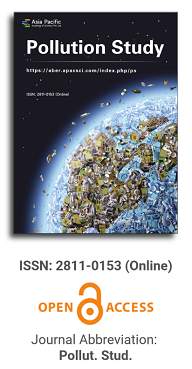 |
City Diversity | View Journal | Current Issue | Register |
City Diversity (CD, eISSN: 2811-0110) is an open access journal published online by Asia Pacific Academy of Science Pte. Ltd. CD welcomes contributions that explore the rich tapestry of urban societies, examining how different cultural and ethnic backgrounds interact, how economic disparities influence city living, and how social and environmental factors impact the urban fabric. We welcome different types of articles including original research articles, reviews, perspectives, etc. |  |
The Global Scientific Research Top Who's Who | View Journal | Current Issue | Register |
|
The Global Scientific Research Top Who's Who (eISSN: 3029-293X) is designed to encourage and recognize those who are making and have made contributions to the advancement of science. Included scholars should have an outstanding scientific research level, sufficient scientific research vision, and beneficial social influence. |
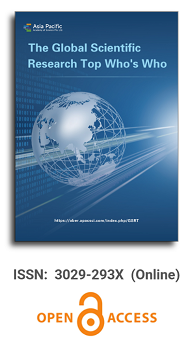 |
Biochemistry Applications | View Journal | Current Issue | Register |
|
Biochemistry Applications (B-A) is a comprehensive, high-quality international open-access journal that brings together multi-industry features of biochemistry technology and application. The journal provides a good communication platform for scholars and experts from various industries, and we welcome the submissions of original research articles, review articles, case reports, commentaries, etc. |
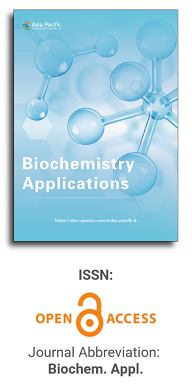 |
Algasphere | View Journal | Current Issue | Register |
|
Algasphere will focus on the innovative algae technologies for environmental remediation, energy, food and bioproducts. It is intended to attract submissions that investigates diverse algae applications, smart technologies, applied phycology and sustainable algal-based solutions. The journal will offer a broad expansion of upstream and downstream processing of algae in areas of bioenergy, bioremediation and bioproducts. Works of interest includes precision bioprocessing, scalable algal technologies and circular bioeconomy using algae. |
 |
Biomanufacturing and Bioprocess Engineering | View Journal | Current Issue | Register |
|
Biomanufacturing and Bioprocess Engineering will focus on advanced bioprocess engineering and biomanufacturing techniques. The aim is to attract submissions focusing on scalable, sustainable bio based production that can be integrated with automation and synthetic biology. The journal content will align with circular bioeconomy trends, promoting closed loop systems and bio-based materials for agriculture, pharmaceuticals and industrial application. Works of particular interest will be on how to bridge AI driven process optimization and bioreactors with practical manufacturing solutions.
|
 |
Business and Management Theory and Practice | View Journal | Current Issue | Register |
|
Business and Management Theory and Practice (BMTP, eISSN: 3082-8155) is an international academic journal dedicated to the exploration and dissemination of research in the fields of business and management. As an open access journal, it aims to provide a platform for scholars and practitioners to share innovative ideas, empirical studies, and theoretical advancements that contribute to the understanding of business practices and management theories. The journal publishes various article types including original research articles, review papers, and perspectives that address contemporary issues and challenges in the relevant fields. |
 |
Nanostructure Studies and Applications | View Journal | Current Issue | Register |
|
Nanostructure Studies and Applications (NSA) is an international, peer-reviewed, open-access journal encompassing various disciplines related to all nanostructure-based areas. NSA builds a platform for scientists from around the world to discuss the current use of nanostructures and their future applications. Topics covered include particle synthesis and assembly, dispersions and coatings of nanoparticles, high-surface-area materials, functional nanoscale devices, bulk behavior of nanostructured materials, biological methods and applications, etc. |
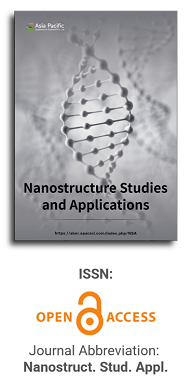 |
Value, Function, Cost | View Journal | Current Issue | Register |
Value, Function, Cost (VFC, eISSN: 2810-918X) is an open-access peer-reviewed journal, which focuses on value engineering related topics. The journal welcomes all relevant submissions of research articles, case studies, reviews and etc. |  |
Advanced Superconductivity | View Journal | Current Issue | Register |
|
Advanced Superconductivity (AS) is an international, peer-reviewed and open-access journal and committed to promoting the deep integration of fundamental research, technological innovation, and industrial applications in superconductivity. We welcome original research papers, reviews, and technical reports covering a broad spectrum of topics, including the application of superconductivity technology in the intersection of multiple disciplines. This publication focuses on the breakthrough progress of superconducting technology in key fields such as energy transition, quantum technology, biomedical science, artificial intelligence, and sustainable society, providing an interdisciplinary and cross-scale cutting-edge communication platform for academia and industry. |
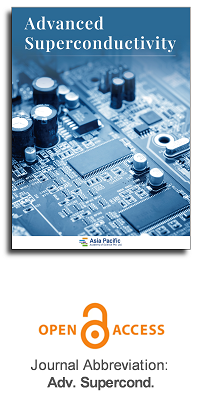 |

